Xiaomi has been expanding to different markets across the globe, but the American market still remains elusive. Even so, this hasn’t stopped third-party retailers from selling Xiaomi phones in the U.S. and other countries where the Chinese vendor has no established distribution channels.
If you are in the market for a new Xiaomi smartphone, you’ve come to the right place. We’ve populated the best Xiaomi phones so far, but as noted, availability of the phones might vary depending on your location. Of course, you can always ship one from the likes of Amazon, among other third-party retailers.
Related:
Xiaomi’s best Android phones [April 2019]
Here, we take a look at the best the Chinese OEM has on offer in several markets, but first, their prices and direct purchase links. Note that Xiaomi phones aren’t officially sold in the U.S., but Amazon has plenty of them. One thing though, be sure that the device supports the required LTE bands for your network.
Xiaomi recently entered the UK market, so it shouldn’t be a problem getting most of these phones. As for Europe, availability spans across multiple markets, but we’ll use pricing info from Xiaomi Spain as the placeholder.
| Device | USA | UK || Europe (Spain) | India |
| Xiaomi Mi MIX 3 5G | To be confirmed | €599 | To be confirmed |
| Xiaomi Mi MIX 3 4G | $530 | £499 || €499 | To be confirmed |
| Xiaomi Mi 9 | To be confirmed | €449 | To be confirmed |
| Xiaomi Mi 9 SE | To be confirmed | To be confirmed | Not available |
| Xiaomi Mi 8 | $390 | £399 || €369 | Not available |
| Xiaomi Poco F1 | Not available | £329 || €329 | INR 19,999 |
| Xiaomi Black Shark 2 | To be confirmed | To be confirmed | To be confirmed |
| Xiaomi Mi Max 3 | Not available | £270 | Not available |
| Xiaomi Mi A2 | $185 | £259 || €249 | INR 11,999 |
| Xiaomi Redmi Note 7 | To be confirmed | €179 | INR 9,999 || INR 13,999 |
| Xiaomi Redmi 7 | To be confirmed | To be confirmed | To be confirmed |
| Xiaomi Redmi Go | $79 | £65 || €69 | INR 4,499 |
Xiaomi Mi MIX 3 (5G)
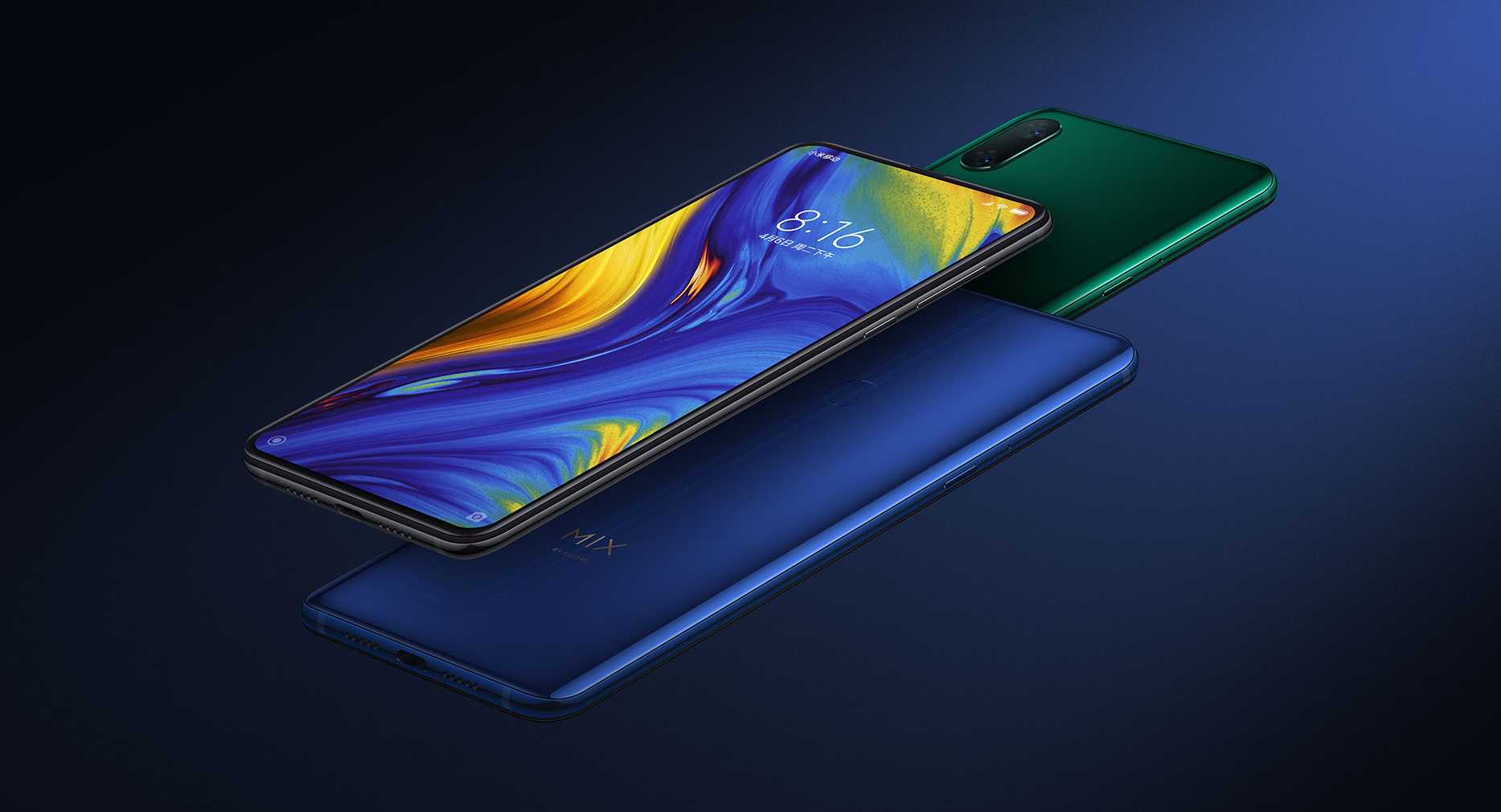
A few years ago, it would have been difficult to imagine a smartphone with virtually no bezel, but Xiaomi did it, to say the least.
The Mi MIX 3 uses a slider mechanism to reveal a dual-lens selfie camera, hence eliminating the notch. To minimize cases of damage, Xiaomi went for a magnetic slider that relies on the user to manually slide to reveal the front camera, contrary to other vendors that are using a mortar that’s likely to fail at some point. Xiaomi says it has tested the Mi MIX 3 slider over 300,000 times to ensure that it can survive for as long as possible.
Xiaomi Mi MIX 3 is big on specs. In fact, the phone became one of the first in the world to rock 10GB or more RAM. While it might not be easy getting hold of this variant, it sure will be a marvel for anyone who can get their hands on it. However, like the rest of Xiaomi’s flagship phones from the recent past, there is no 3.5mm audio jack.
Specs
- 6.39-inch 19.5:9 FHD+ AMOLED display
- Qualcomm Snapdragon 845 processor
- 6GB, 8GB or 10GB RAM
- 128GB or 256GB storage
- Dual 12MP + 12MP main camera
- Dual 24MP + 2MP front camera
- 3200mAh battery
- Android 9 Pie
- Extras: Bluetooth 5.0, USB-C, Rear-mounted FPS, Quick Charge 4.0+, Wireless charging, NFC, AAC/aptX/aptX-HD Audio, etc.
As usual, the MIX 3 costs much cheaper compared to other Android flagship phones with some poor design choices and weaker hardware specs, but of course, not everyone is a fan of MIUI 10 that runs on top of Android 9 Pie. However, with such massive raw power, you shouldn’t even notice any lags in performance as it is usually associated with heavily-customized Android skins like MIUI.
If you want a future-proof Xiaomi flagship, the slightly costlier Mi MIX 3 5G is what you should get. Besides 5G, this phone also gets a more powerful Snapdragon 855 processor and a bigger 3800mAh battery, but the RAM is capped at 6GB, otherwise, everything else remains the same.
Related: Xiaomi Mi MIX 3 5G is the cheapest 5G phone so far and is coming to Europe in May
Alternatively, you can also check out the Mi MIX 2S, that is, if you can bump into one. On paper, the MIX 2S doesn’t disappoint at all, but being a 2018 release, it packs 2018 hardware, which, by all means, is no slouch either. We are talking about specs like a Qualcomm Snapdragon 845 processor allied to 6GB RAM and at least 64GB of non-expandable storage, a dual 12MP AI back camera, and a 3400mAh battery. Yes, you get Oreo preinstalled, but with a guarantee to receive OS updates up to Android Q.
Other premium features include Bluetooth 5.0, USB-C, Quick Charge 3.0, Qi wireless charging, rear-mounted scanner, AI voice assistant, etc.
Xiaomi Mi 9
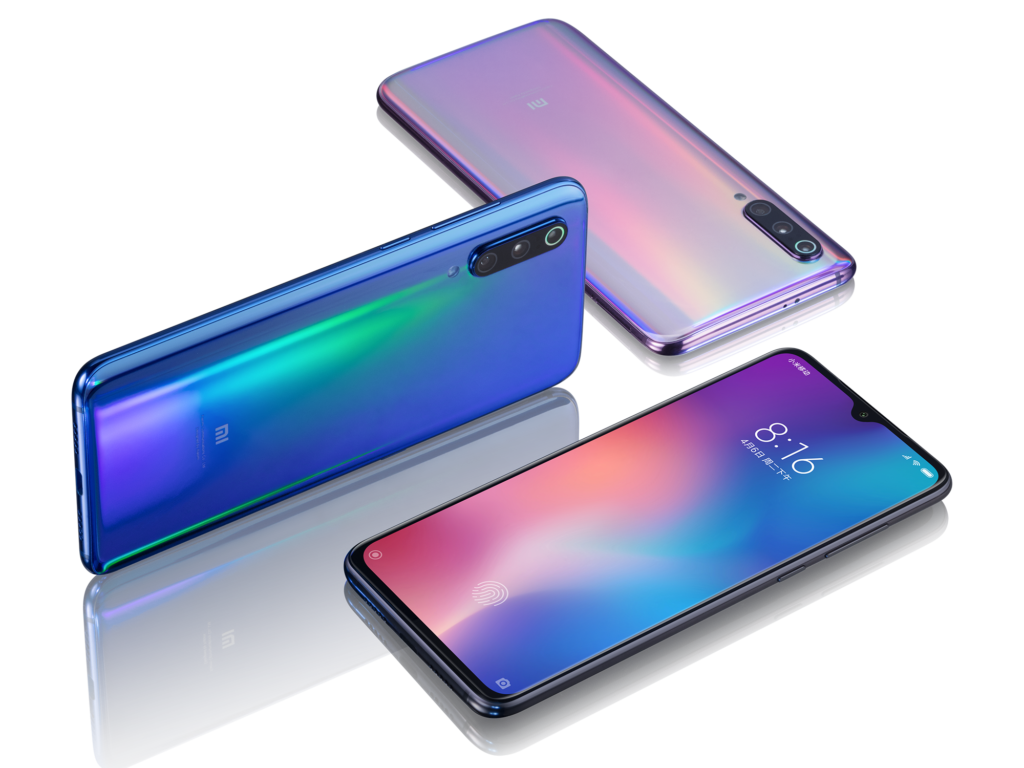
Xiaomi Mi 9 is the latest flagship smartphone from the Chinese company and like its predecessor, the handset is big on specs and features, but this time, the huge notch on the display screen has been shrunk to something smaller and more appealing to the eye. The screen size has also grown bigger, but at the same resolution.
To match the trend, the Mi 9 has three lenses on the back for photography purposes. The lenses are dedicated to shooting standard, telephoto and ultra-wide photos, making it one of the most balanced camera array on any phone.
Specs
- 6.39-inch 19.5:9 FHD+ AMOLED screen with waterdrop notch
- Qualcomm Snapdragon 855 processor
- 6GB, 8GB or 12GB RAM
- 64GB, 128GB or 256GB storage
- Tri-lens 48MP (standard) + 16MP (ultra-wide) + 12MP (telephoto) main camera
- 20MP front camera
- 3300mAh battery
- Android 9 Pie with MIUI 10
- Extras: Bluetooth 5.0, USB-C, NFC, 960fps video recording, etc.
If you dig the Mi 9 design but for some reason, the price is a bit too high for you, then the Xiaomi Mi 9 SE is your ideal pick. The phone shares the same design language as the flagship Mi 9, including sporting a tri-lens camera on the back, but on the inside, different hardware has been used to match the cheaper price. It’s also smaller in size and hence it ships with a smaller battery unit.
The Mi 9 SE has a 5.97-inch notched AMOLED panel, a Snapdragon 712 processor, 6GB RAM, 64GB storage, a main camera consisting of 48MP + 13MP + 8MP, a selfie shooter of 20MP and a 3070mAh battery. Like the high-end Mi 9, you also get an in-display fingerprint scanner.
Xiaomi Mi 8
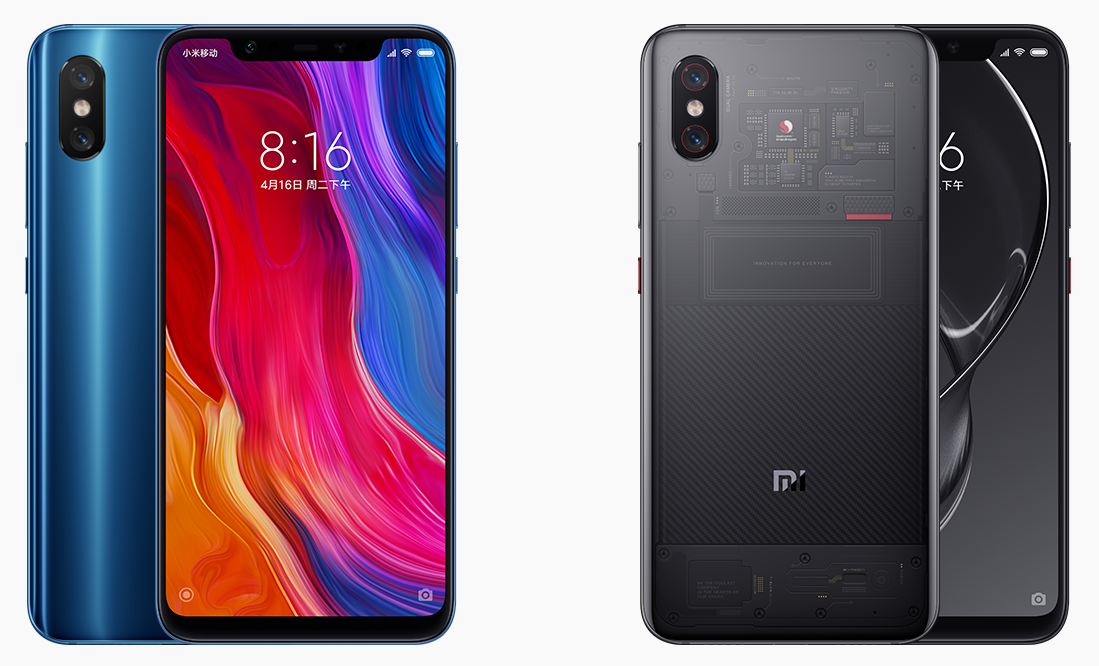
Xiaomi Mi 8 is a 2018 release, but even so, the device still packs powerful specs, has a trendy design language and is equally affordable, especially now that the Mi 9 is here.
The phone launched at the back end of May 2018 and is available for purchase in multiple countries. However, it’s not alone. In fact, it has quite a good number of siblings to accompany it. The first batch welcomed the Mi 8, Mi 8 SE and Mi 8 Explorer Edition (EE). These three are still selling in multiple markets across the globe alongside the Mi 8 Pro and Mi 8 Lite – making it a total of five Xiaomi Mi 8 variants.
Specs
Mi 8 SE
- 5.88-inch Super AMOLED FHD+ (2244 x 1080) display
- Qualcomm Snapdragon 710 processor
- 4GB/6GB RAM
- 64GB of storage
- Dual 12MP + 5MP main camera
- 20MP front camera
- 3120mAh battery
- Android 8.1 Oreo
- Extras: Bluetooth 5.0, USB-C, Quick Charge 3.0, dual 4G LTE, rear-mounted scanner, facial recognition, etc.
Mi 8
- 6.21-inch Super AMOLED FHD+ (2248 x 1080) display
- Qualcomm Snapdragon 845 processor
- 6GB RAM
- 64GB/128GB/256GB storage
- Dual 12MP + 12MP main camera
- 20MP front camera
- 3400mAh battery
- Android 8.1 Oreo
- Extras: Bluetooth 5.0, USB-C, Quick Charge 4.0+, dual 4G LTE, dual-band GPS, rear-mounted scanner, infrared face ID, etc.
Mi 8 EE
- 6.21-inch Super AMOLED FHD+ (2248 x 1080) display
- Qualcomm Snapdragon 845 processor
- 8GB RAM
- 128GB storage
- Dual 12MP + 12MP main camera
- 20MP front camera
- 3000mAh battery
- Android 8.1 Oreo
- Extras: Bluetooth 5.0, USB-C, Quick Charge 4.0+, dual 4G LTE, dual-band GPS, in-display scanner, 3D Face ID, etc.
While we’d very much like to recommend the transparent variant, getting hold of one can be an uphill task. Still, if you are able to access it, it’s the model that you should be buying, especially since it also includes flashy features like in-display fingerprint scanning and 3D facial recognition.
Related: Xiaomi Mi 8: All you need to know
Xiaomi Mi 8 Pro and Mi 8 Lite offer great bang for your buck. The former borrows a significant chunk of specs and design from the Mi 8 and to justify the Pro moniker, amps a bunch of them to rooftop levels while still managing to keep the price checked. As for the Lite variant, the specs are watered-down but coming from Xiaomi, you are still getting a solid package, especially for its price of about $200.
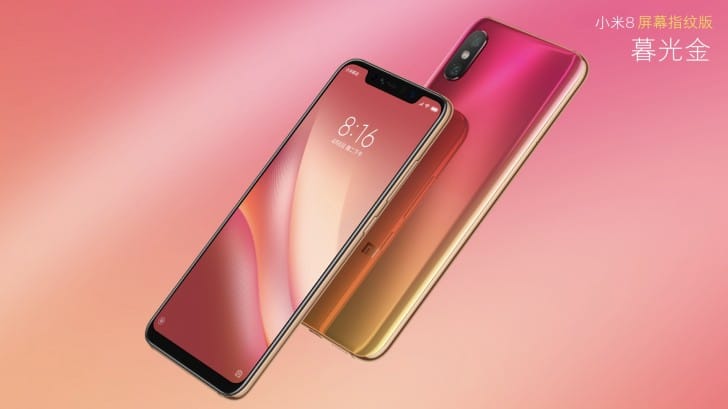
Specs
Mi 8 Pro
- 6.21-inch FHD+ Super AMOLED display
- Snapdragon 845 processor
- 6GB or 8GB RAM
- 128GB storage
- Dual 12MP + 12MP main camera
- 20MP front camera
- 3000mAh battery
- Android 8.1 Oreo
- Extras: Bluetooth 5.0, USB-C, in-display FPS, NFC, Quick Charge 4.0+, IR Face unlock, HDR10, Gorilla Glass 5, etc.
Mi 8 Lite
- 6.26-inch FHD+ LCD display
- Snapdragon 660 processor
- 4GB or 6GB RAM
- 64GB or 128GB storage
- Dual 12MP + 5MP main camera
- 24MP front camera
- 3350mAh battery
- Android 8.1 Oreo
- Extras: Bluetooth 5.0, USB-C, rear-mounted FPS, Quick Charge 3.0, etc.
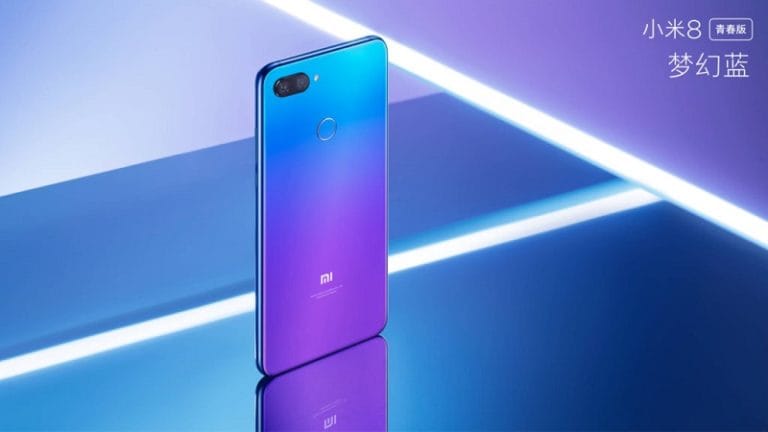
Xiaomi Poco F1
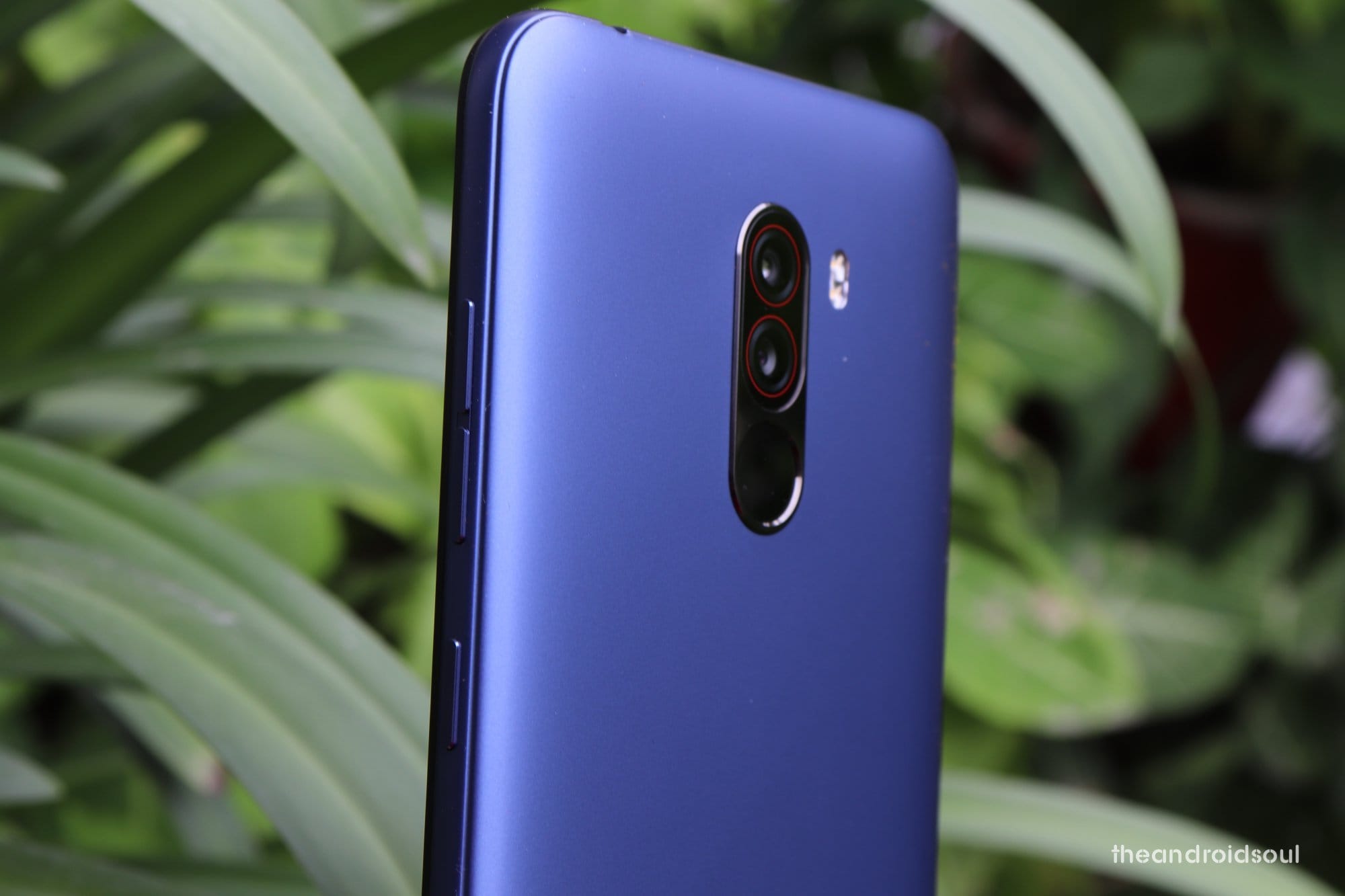
The Xiaomi Pocophone F1, simply known as Poco F1 in India, is the ultimate flagship killer on the market. The likes of OnePlus 6 and Asus ZenFone 5Z are indeed flagship killers, but the Poco F1 shoots down these at two point blank and there’s nothing either OnePlus or Asus can do to turn the tables around. The device packs premium performance specs and features, a big battery, a promise for the latest OS in town, and is dirt cheap, making it one of the most sort-after Xiaomi phones of the moment.
Specs
- 6.2-inch 19:9 FHD+ (2248×1080) LCD display
- Qualcomm Snapdragon 845 processor
- 6GB or 8GB RAM
- 64GB, 128GB or 256GB expandable storage
- Dual 12MP + 5MP main camera
- 20MP front camera
- 4000mAh battery
- Android 8.1 Oreo, upgradable to Pie
The Poco F1 first launched in India priced at INR 20,999 for the base model and goes all the way to INR 29,990 for the premium model of 8GB RAM and 256GB storage. However, not all variants are sold in all markets across the globe. Even better is that the device is now cheaper, especially with talks of the Poco F2 already on the horizon.
Related:
Xiaomi Black Shark 2
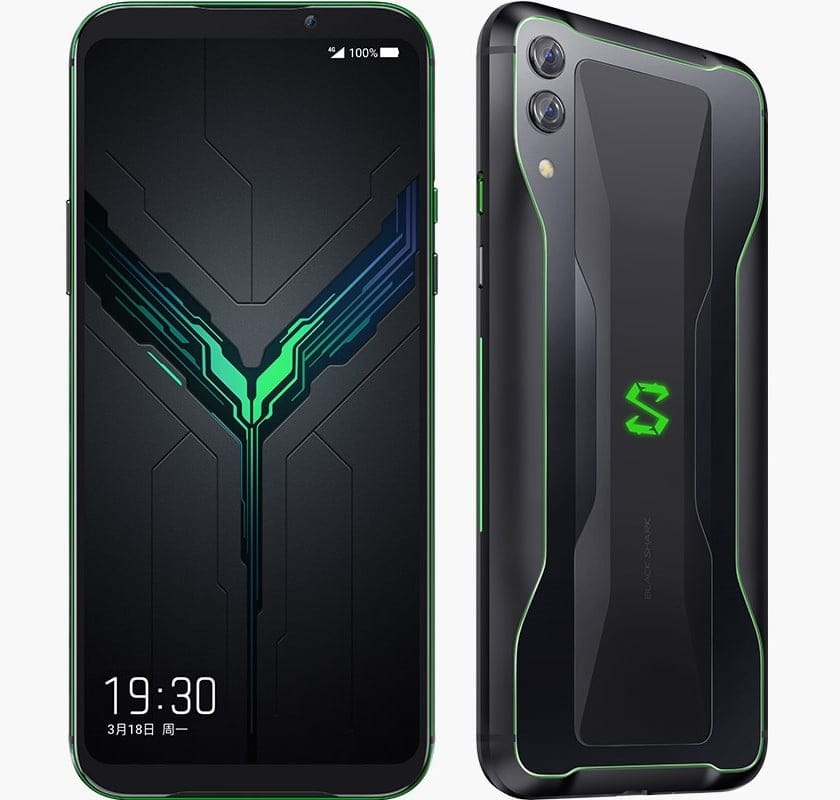
For gamers, there is something for you. While the general consensus is that having top-end specs like a Qualcomm Snapdragon 855 processor, 6GB RAM or more and 128GB storage or more are some of the ingredients for superior mobile gaming, the Xiaomi Black Shark 2 is a device that is meant specifically with gamers in mind.
Besides the aforementioned top-end specs, the Black Shark 2 also incorporates other technologies meant to improve gaming experience on the device alongside a huge 4000mAh battery to ensure the device goes as long as possible on a single charge. While you get stereo speakers, there is no 3.5mm audio jack.
Specs
- 6.39-inch 19.5:9 FHD+ (1080×2340) AMOLED display
- Qualcomm Snapdragon 855 processor
- 6GB, 8GB or 12GB RAM
- 128GB or 256GB storage
- Dual 48MP + 13MP main camera
- 20MP front camera
- 4000mAh battery
- Android 9 Pie
- Extras: Bluetooth 5.0, USB-C, Quick Charge 4.0 (27W) fast charging, in-display fingerprint scanner, pressure-sensitive display, etc.
Besides shipping with an in-display fingerprint scanner, the Samsung-made AMOLED panel is also home to a pressure-sensitive system that adds more functionality to the screen for superior gaming. This feature lets Black Shark 2 users map the buttons on the flanks of the screen and trigger them by pressing that part of the screen harder.
The display screen has further been optimized for enhanced gaming by improving color accuracy, lowering the touch latency and reducing screen flickering, especially at low brightness levels. For about $500 for the base model, this is definitely a worthy buy for hardcore smartphone gamers.
Xiaomi Mi Max 3
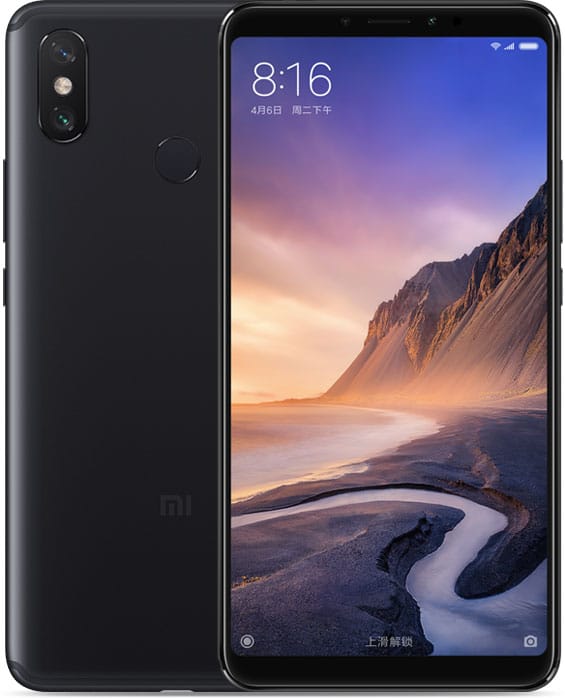
Today, screens of standard phones have grown bigger, forcing those of what used to be true phablets like the Xiaomi Mi Max series to grow even bigger. If you are a fan of big screens, Xiaomi Mi Max 3 has your back. The phone also comes with one of the biggest battery units you’ll find in any phone today and further spices things up by including a dual-lens main camera on the back.
Although the Mi Max 3 has Android Oreo preinstalled, you can be sure of an update to Android 9 Pie, although we cannot guarantee anything in regards to Android Q.
The huge display screen should be great for those who enjoy watching videos on the go, reading long posts, and even for gamers.
Specs
- 6.9-inch 18:9 FHD+ LCD display
- Qualcomm Snapdragon 636 processor
- 4GB or 6GB RAM
- 64GB or 128GB expandable storage
- Dual 12MP + 5MP main camera
- 8MP front camera
- 5500mAh battery
- Android 8.1 Oreo
- Extras: Bluetooth 5.0, USB-C, 3.5mm audio jack, Rear-mounted fingerprint scanner, Quick Charge 3.0, etc.
Xiaomi Mi A2
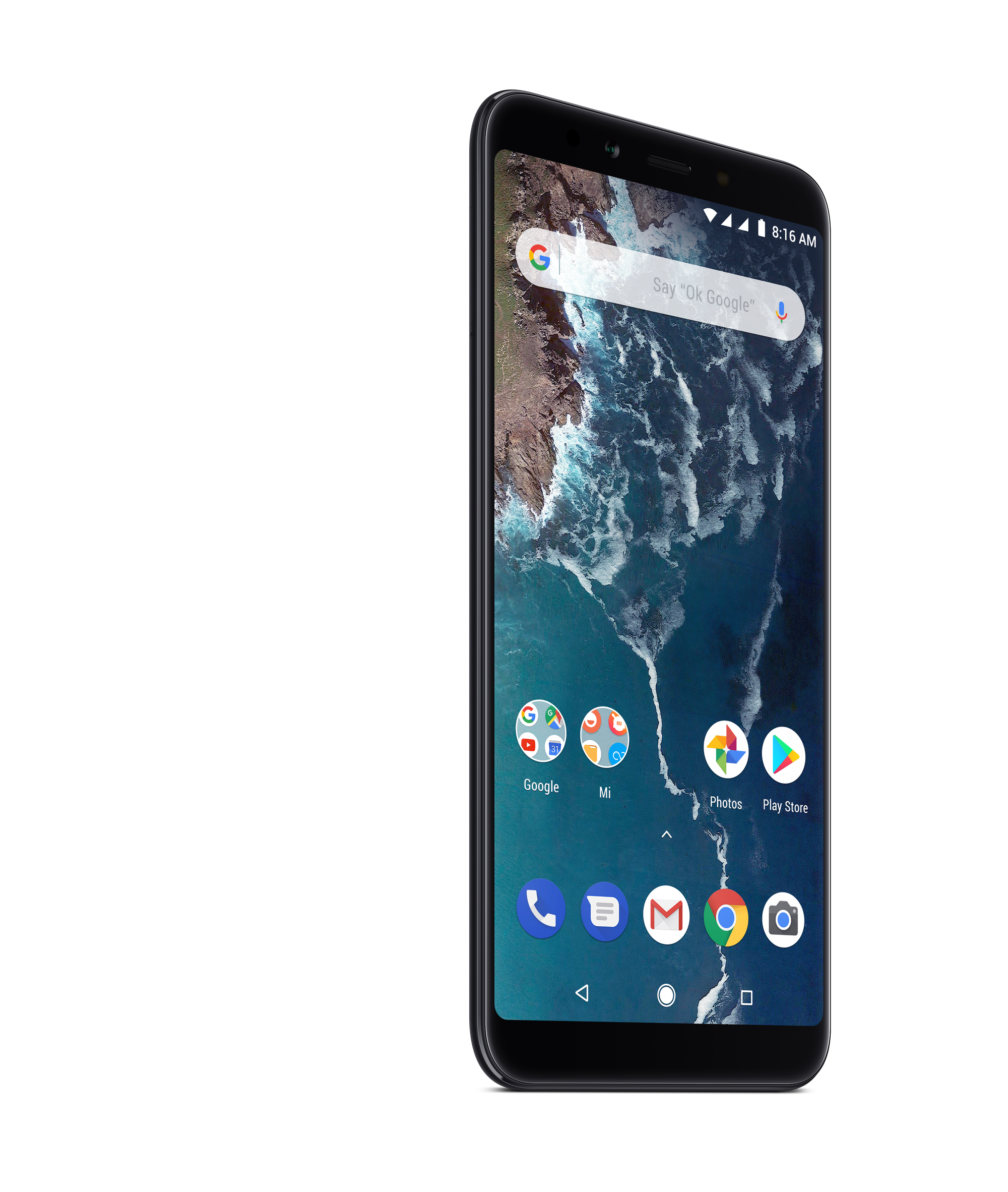
Xiaomi’s first Android One smartphone was a hit and so is the second-generation Xiaomi Mi A2, which has been selling in multiple markets since mid-2018.
Like many other Xiaomi phones, the Mi A2 is almost perfect as far as design and specs are concerned, but the lack of NFC will once again be a major pain among many who plan to grab this one. Even worse is the missing 3.5mm audio jack, but on the brighter side, you are still getting things like USB-C, fast charging technology, a fingerprint scanner, a dual-lens camera, and a promise for timely software updates at about €200 depending on where you buy it.
Specs
- 5.99-inch 18:9 FHD+ LCD display
- Snapdragon 660 chipset
- 4GB or 6GB RAM
- 32GB, 64GB or 128GB storage
- Dual 12MP + 20MP main camera
- 20MP front camera
- 3010mAh battery
- Android 8.1 Oreo
- Extras: LTE, Fast charging, USB-C, Bluetooth 5.0, Rear-mounted scanner, Face unlock, etc.
Unlike the OG version, the Mi A2 has a partner in the shape of Mi A2 Lite. Essentially, this device packs just about the same hardware as the Mi A1 or Redmi 6 Pro for that matter, but with a few tweaks here and there.
 It also joins Xiaomi’s notch camp and even though the display is smaller than its counterpart, you get a massive 4000mAh battery, a 3.5mm audio jack, and a disappointing microUSB port. You can check out everything there’s to know about the Mi A2 and Mi A2 Lite in the link below.
It also joins Xiaomi’s notch camp and even though the display is smaller than its counterpart, you get a massive 4000mAh battery, a 3.5mm audio jack, and a disappointing microUSB port. You can check out everything there’s to know about the Mi A2 and Mi A2 Lite in the link below.
Related: Xiaomi Mi A2 and Mi A2 Lite: All you need to know
Xiaomi Redmi Note 7
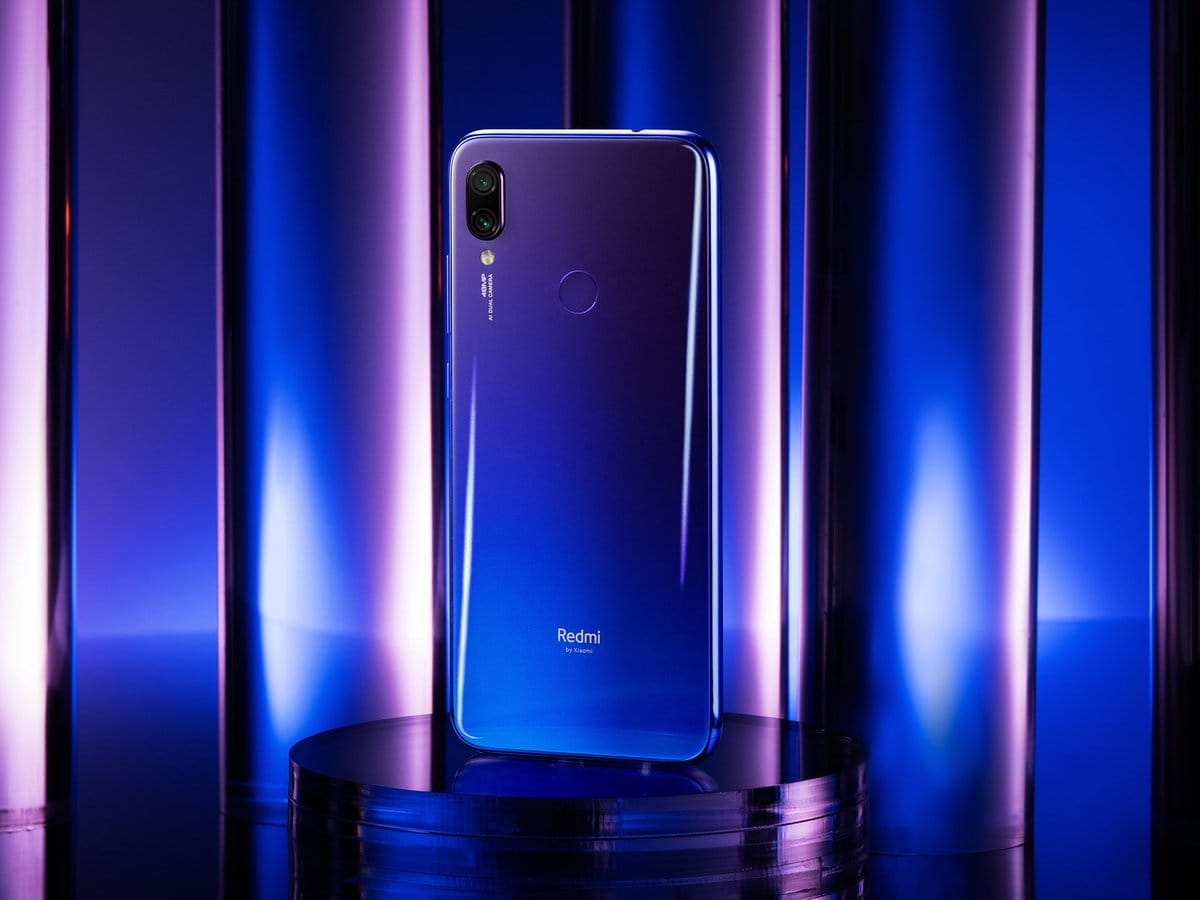
Inside the Redmi Note 7’s glass body are the usual powerful specs and features that have made the Redmi series such a popular brand. However, what makes the Redmi Note 7 such a juicy phone is the dual 48MP + 5MP camera on the back, the first of its kind on a Xiaomi phone. The waterdrop notch on the front houses a 13MP lens and keeping it alive is a 4000mAh battery.
Although it supports Qualcomm’s Quick Charge 4, the brick accompanying the phone out of the box supports 5V/2A charging, meaning you need to buy a separate brick that supports fast charging.
Here are the rest of the Redmi Note 7 specs.
Specs
- 6.3-inch 19.5:9 FHD+ (2340 x 1080) Dot Drop LCD display
- Qualcomm Snapdragon 660 processor
- 3GB or 4GB RAM
- 32GB, 64GB or 128GB expandable storage, up to 256GB
- Dual 48MP + 5MP main camera
- 13MP front camera
- 4000mAh battery
- Android 9.0 Pie with MIUI 10
- Extras: Bluetooth 5.0, USB-C, Quick Charge 4, 3.5mm audio jack, Fingerprint (rear-mounted), IR Blaster, AI face unlock, Corning Gorilla Glass 5 protection, etc.
The Redmi Note 7 takes after Huawei and its gradient colors, where you get Twilight Gold, Fantasy Blue, and Bright Black paint jobs.
While the global variant of the Note 7 has a 48MP lens similar to the Note 7 Pro sold in China and India, the former sticks to the same Snapdragon 660 processor used in the standard model sold in these two markets. Just so you know, the Pro model comes with a Snapdragon 675 chipset with up to 6GB RAM.
Xiaomi Redmi Note 6 Pro
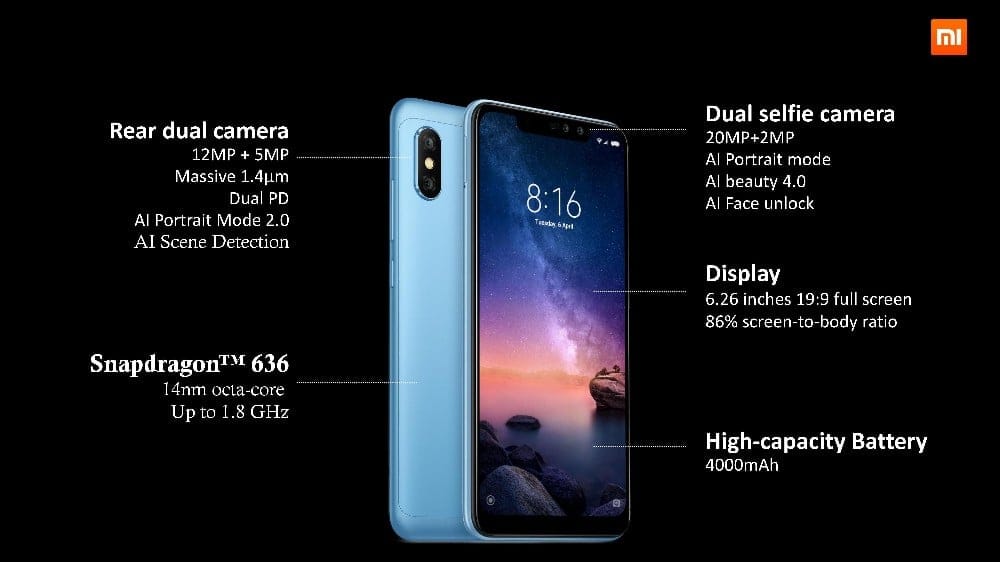
If your market hasn’t received the Redmi Note 7, well, there’s no walking past the Redmi Note 6 Pro. By far, this is the best budget phone from 2018 that money can buy at the moment. Boasting a full-screen 19:9 notched display with a massive 6.26-inch full HD+ resolution, the Redmi Note 6 Pro takes after its immediate predecessor by rocking a Snapdragon 636 SoC, which is mated with 4GB RAM and 64GB storage.
There’s a Note 5 Pro-like dual 12MP + 5MP camera on the back while for the selfies, you get a depth-sensing 2MP lens to accompany the primary 20MP unit that is also supported by an LED flash. The battery stands at a massive 4000mAh and includes support for fast charging technology. The Redmi Note 6 Pro has an RRP of INR 15,999 in India, although Flipkart is selling it at a discounted INR 11,999, which is about $185.
Specs
- 6.26-inch 19:9 FHD+ LCD display with a notch
- Qualcomm Snapdragon 636 processor
- 4GB 0r 6GB RAM
- 64GB storage, expandable up to 256GB
- Dual 12MP + 5MP main camera
- Dual 20MP + 2MP selfie camera
- 4000mAh battery
- Android 8.1 Oreo
- Extras: Bluetooth 5.0, microUSB, 3.5mm audio jack, rear-mounted FPS, AI face unlock, IR port, etc.
Xiaomi Redmi 7
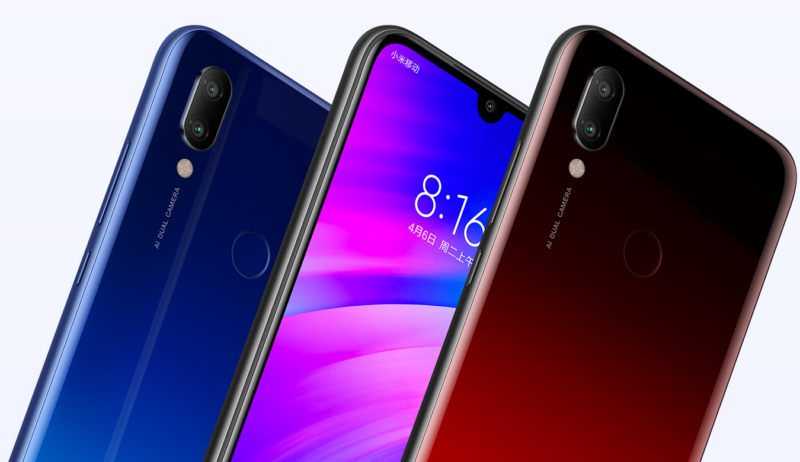
Xiaomi has announced the Redmi 7 in China and as expected, the phone is coming to a shop near you. As tradition dictates, the Redmi 7 is the understudy to the superior Redmi Note 7, but there’s a lot to be desired about this phone. Packing in hardware specs resembling the costlier Motorola Moto G7, the Redmi 7 steps up with a bigger 4000mAh battery, a dual-lens camera on the back with a dedicated depth sensor, and a P2i nano hydrophobic coating to protect the device against light spillage.
Specs
- 6.26-inch 19:9 HD+ (720×1520) LCD display
- Qualcomm Snapdragon 632 processor
- 2GB or 3GB or 4GB RAM
- 16GB or 32GB or 64GB expandable storage
- Dual 12MP + 2MP main camera
- 8MP front camera
- 4000mAh battery
- Android 9 Pie with MIUI 10
- Extras: Bluetooth 4.2, microUSB, 3.5mm audio jack, Rear-mounted fingerprint scanner, Infrared Port, 10W charging, Corning Gorilla Glass 5, P2i nano hydrophobic coating, etc.
What makes the Redmi 7 the real deal is the price, where for all you get, Xiaomi only wants about $105 (in China) for the base model, but it could arrive at your doorstep priced at about $150. In Europe, it goes for an equivalent of about €130.
Xiaomi Redmi 6 Pro
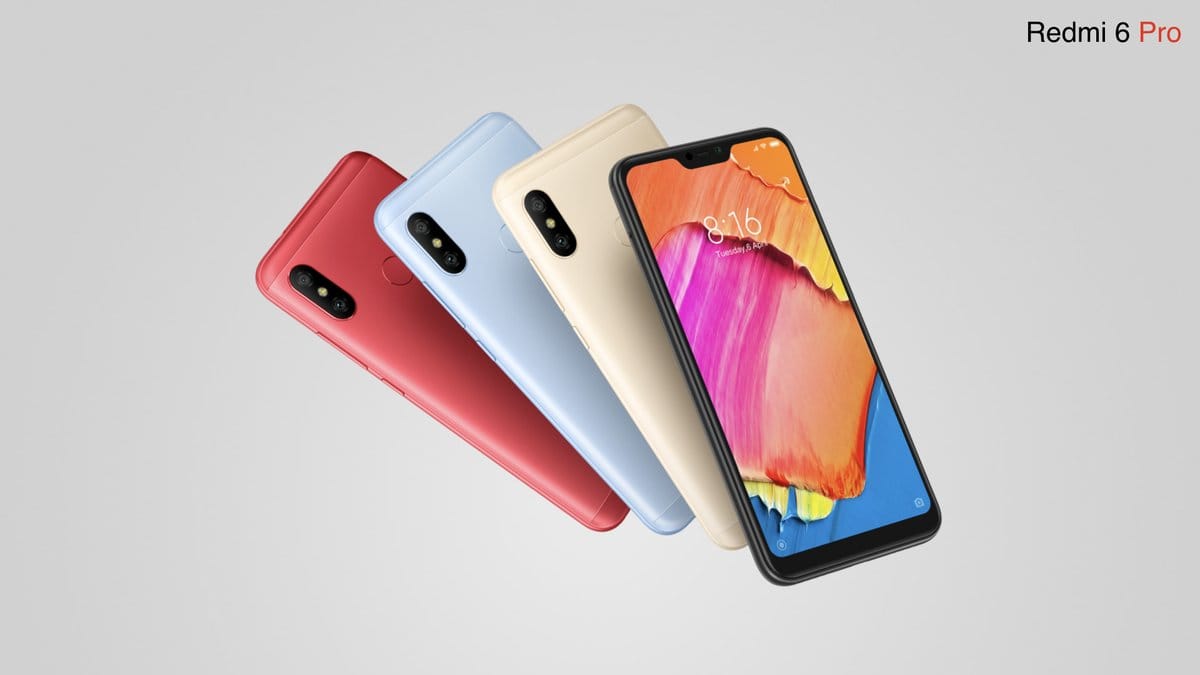
If you feel like waiting for the new Redmi 7 is a problem, Xiaomi has another great piece of hardware in Redmi 6 Pro. A cranked up version of the natural successor to the popular Redmi 5, you are basically getting the same unit as the Redmi Note 5 (Redmi 5 Plus) but with a new design language and some new features as well. The Redmi 6 Pro has a 5.84-inch full HD+ display with a notch, a Qualcomm Snapdragon 625 processor, 3/4GB RAM, 32/64GB storage, a dual 12MP + 5MP main camera, 5MP selfie camera, a huge 4000mAh battery unit, and runs Android 8.1 Oreo out of the box with a promise for Android 9 Pie update. The Redmi 6 Pro, if you like, is an improved Redmi Note 5 but cheaper on the price.
To get your hands on one of these in India, you’ll need INR 10,999 for the base model and INR 12,999 for the high-end variant. These figures translate to about $150 and $180, respectively. You can check out everything you need to know about the Redmi 6 Pro here.
Specs
- 5.84-inch 19:9 FHD+ (2280 x 1080) LCD display
- Qualcomm Snapdragon 625 processor
- 3GB+32GB, 4GB+32GB, and 4GB+64GB memory options
- Dual 12MP + 5MP main camera
- 5MP front camera
- Android 8.1 Oreo with MIUI 9
- 4000mAh battery
- 149.33 x 71.68 x 8.75 mm, 178g
- Extras: Bluetooth 4.2, Rear-mounted scanner, AI face unlock, AI portrait mode, EIS, slo-mo video 720p @120fps, microSD (up to 256GB), Dual SIM, LTE, fast charging, 3.5mm audio jack, microUSB, etc.
Related: Xiaomi Android 9 Pie update news
Xiaomi Redmi 6A
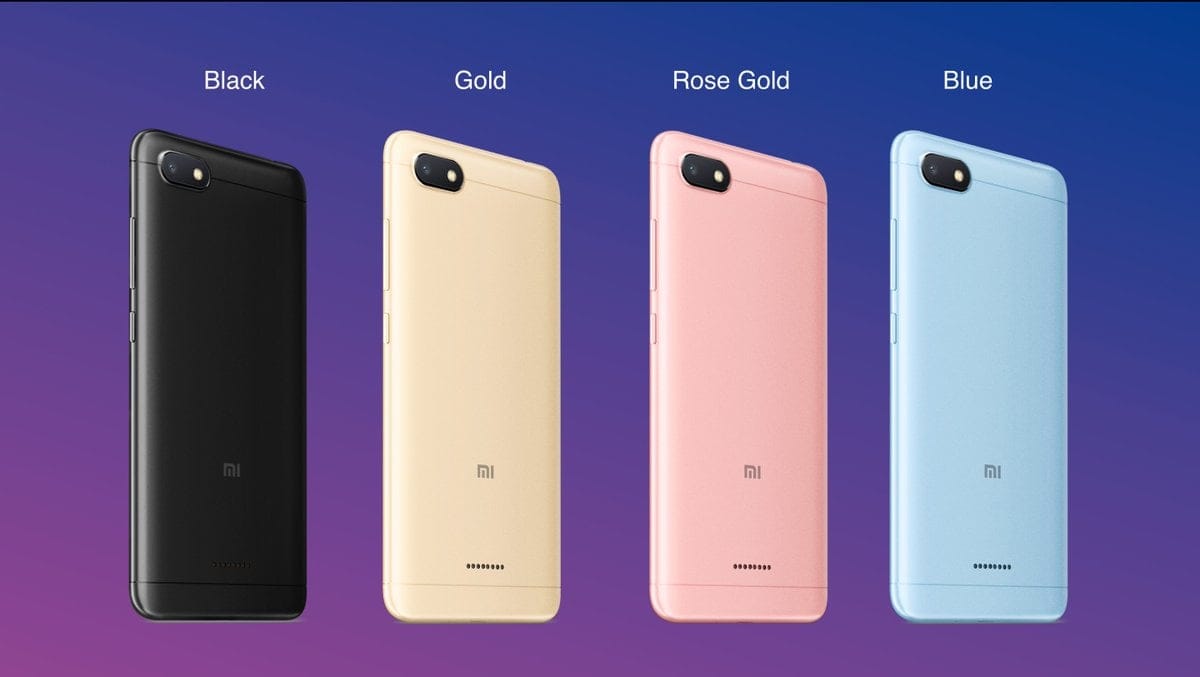
Xiaomi is king of the budget segment and indeed the Redmi 6A is king of the budget phones. At just INR 5,999 or about $85, the Redmi 6A is the best device such money can buy. As usual with Xiaomi phones, you get a great build and in keeping up with the trends, there’s an 18:9 HD+ LCD display screen that stretches over 5.45 inches, a MediaTek Helio A22 chipset, 2GB RAM and 16/32GB storage options. There’s a 13MP main shooter and a 5MP unit for selfies that Xiaomi says has AI portrait mode. Keeping it alive is a decent 3000mAh battery unit.
The high-end variant of the Redmi 6A can be had for INR 6,999, which is still a steal for what you get. You can check out everything you need to know about the Redmi 6A here.
Specs
- 5.45-inch 18:9 HD+ LCD display
- MediaTek Helio A22 processor
- 2GB RAM
- 16GB or 32GB expandable storage
- 13MP main camera
- 5MP front camera
- 3000mAh battery
- Android 8.1 Oreo, upgradable to Android Pie
- Extras: Bluetooth 4.2, microUSB, 3.5mm audio jack, face unlock, 4G LTE, etc.
Xiaomi Redmi Go
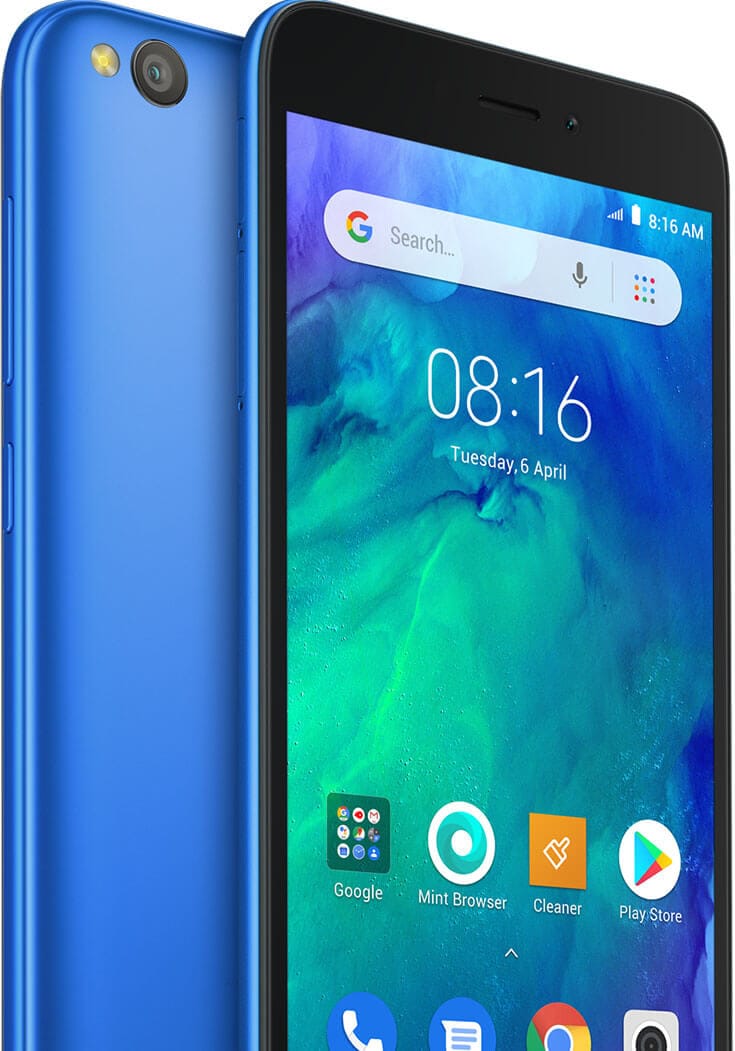
Xiaomi, like other top-end smartphone vendors, has joined the Android Go ship, first with the Redmi Go. The phone, hands down, is one of the most powerful you can get in this family of phones to date. Still, this doesn’t make it the perfect phone, but at a price of about $80 or below, you are getting something equivalent to the Nokia 2.1 at a much cheaper price.
Given the less resource-intensive apps that come preinstalled, you can be sure that the 3000mAh unit on board will last more than a day on a single charge. unfortunately, the Redmi Go comes preinstalled with Android 8.1 Oreo Go edition, which is strange considering that the aforementioned Nokia 2.1 has already received an update to the Go edition of Android Pie.
Specs
- 5.0-inch 16:9 HD (720×1280) LCD display screen
- Qualcomm Snapdragon 425 processor
- 1GB RAM
- 8GB expandable storage
- 8MP main camera and 5MP front camera
- 3000mAh battery
- Android 8.1 Oreo Go edition
- Extras: Bluetooth 4.1, microUSB, 3.5mm audio jack, GPS, FM Radio, 4G LTE, etc.
So, are you buying a Xiaomi phone? Which one, if yes? And if not, why? Let us know in your comments below. We are eager to hear your thoughts on this.

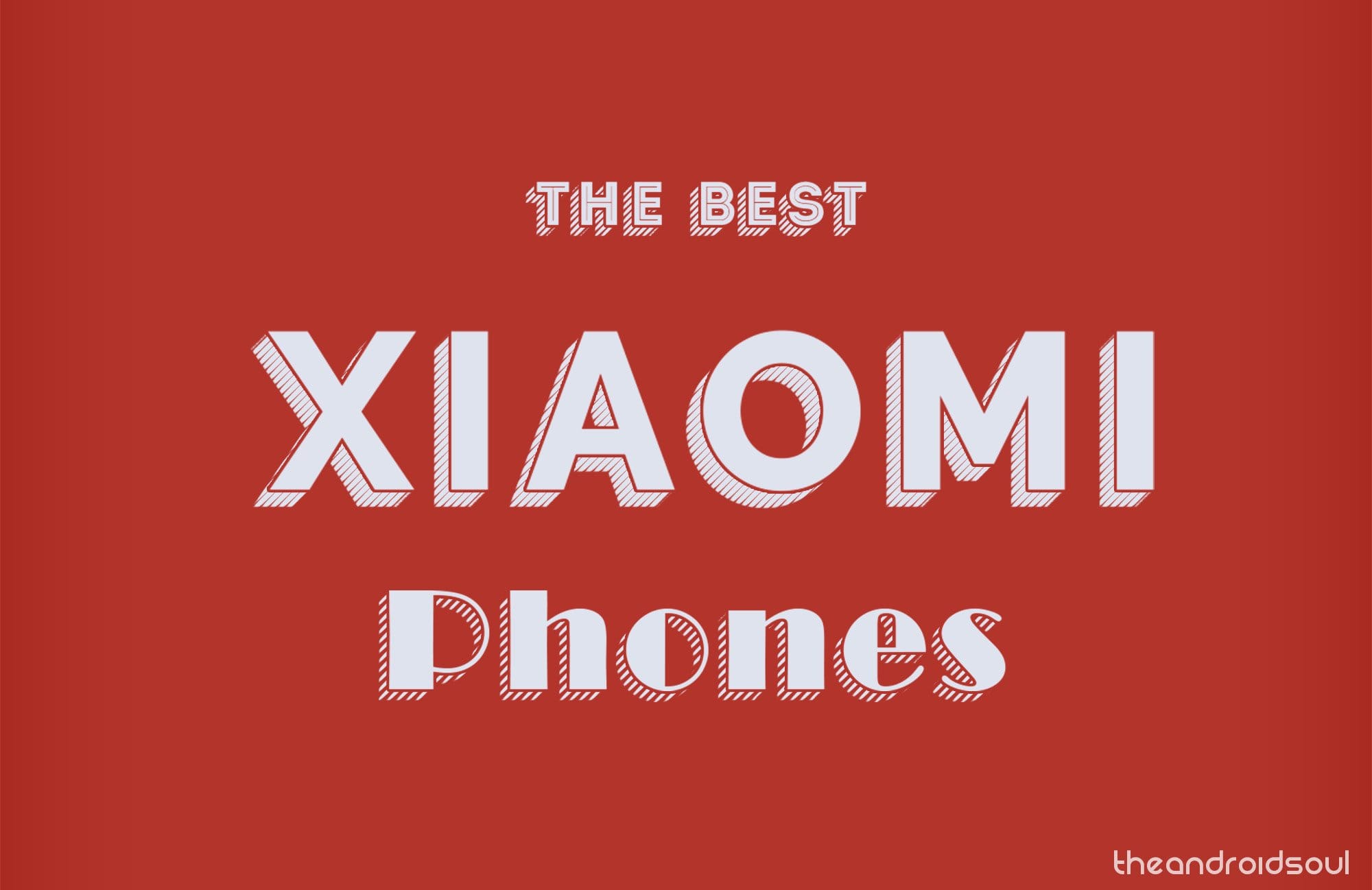







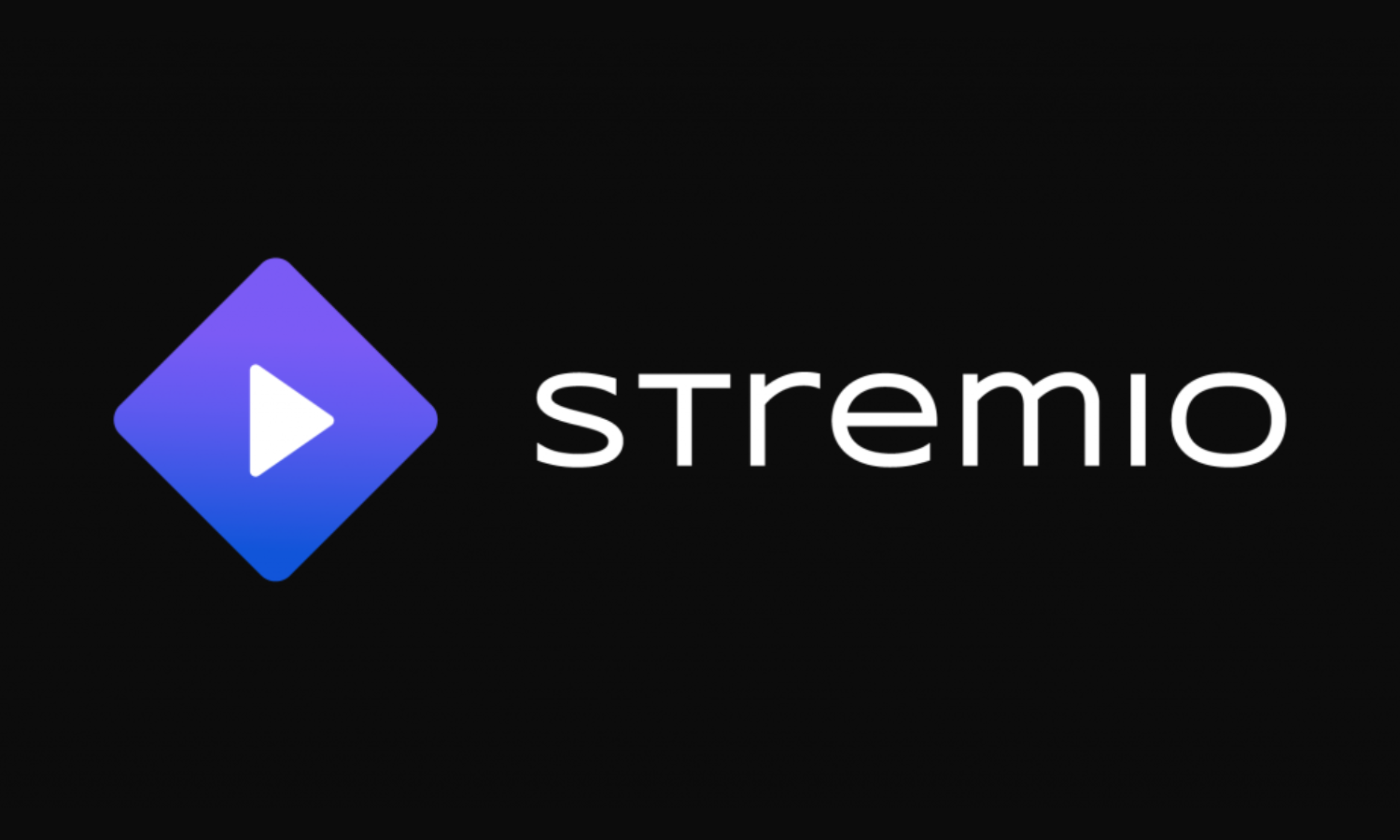



Discussion